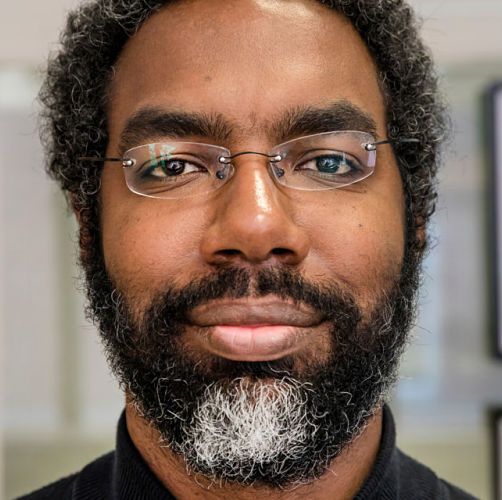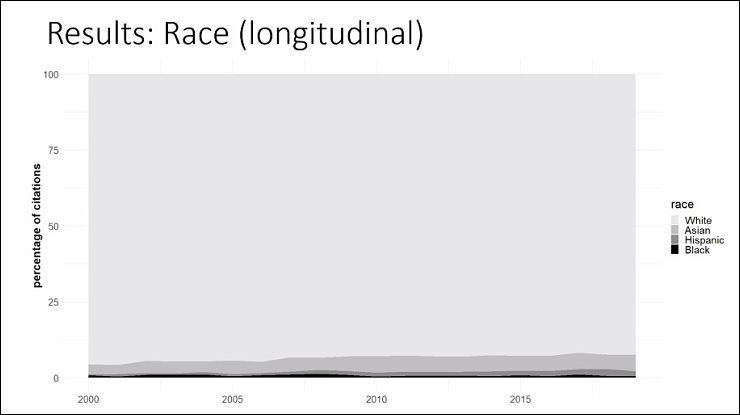 Higher Education Reform
Higher Education Reform Keeping an Eye on Who We Cite – and Who We Don’t
“Make sure you’re not only citing white guys!”
That was the unmistakable takeaway Wednesday as Deen Freelon of the Hussman School of Journalism and Media at the University of North Carolina-Chapel Hill discussed his research into citation inequities in the social sciences. His deep dive into his own field of communications suggests that those cited the most are almost exclusively white and male.

Freelon spoke as part of the Race+Data Science series at Columbia University’s Data Science Institute, and he emphasized that while his research focused on citations specifically and only within communications, his goal is “to get people to think about the degree of diversity in their field” across the board. “My hope is that the lessons, especially the methodological ones, can be applied to other fields.”
A principal researcher at the Center for Information, Technology, and Public Life, he prefaced his findings saying inequity has long plagued the social sciences, and only just now is changing “slightly” after centuries of domination by white men. Identity-based inequities, Freelon argued, create a sort of negative feedback loop, affecting what kind of research gets done, how it can get done, who can do it, and last – and “perhaps most importantly” – who gets credit. Those with credit, with the resulting credibility and gravitas, determines the direction of the field, what is important, and thus back to what kind of research gets done.
Citations are, at present, the currency of credit; “what a citation means is that you are being taken seriously by people in your field.” (While Freelon acknowledged citations may not be the optimal unit to determine impact, right now they are, and so at present “I don’t think we can get rid of citations.”) And so those without citations are, in essence, the have-nots.
This was brought home in a 2016 article in the Journal of Communication titled “#CommunicationSoWhite.” That article by Paula Chakravartty, Rachel Kuo, Victoria Grubbs, and Charlton McIlwain found that only 14 percent of first authors in communications paper published between 2000 and 2016 were non-white. In turn, papers authored by non-whites were cited significantly less often than those authored by whites, and that there was strong ‘citational segregation’ – with whites tending to cite other whites, and non-whites citing non-whites.
Building off that article, Freelon’s research looked at the first authors’ race, gender, institutional affiliation (plus the university’s ranking and whether it was public or private), country of employment, year of their first publication, and discipline in articles published in 10 prominent communications journals between 2000 and 2019. After examining 8,816 articles which had been referenced almost 370,000 times, he produced a list of what he terms the “Communication Citation Elite” – the 1,011 most cited first authors, accounting for 33 percent of all citations collected. (Having already noted that the communications field often draw inspiration from outside its disciplinary boundaries, he noted that only 44.6 percent of his “elite” actually work in university communications departments.) And while first authors are the lead in communications articles, his data source, Web of Science Journal Citation Reports, also only lists first authors.
Males, he found, made up 75 percent of the elite. Female representation rose – roughly 6 percent – over the two-decade study period (one person self-identifies as non-binary), but Freelon added that at this rate it will take until 2070 for women to catch up to men. To compare with the field as a whole, 48 percent of the International Communications Association membership who gave gender data were female.

Freelon prefaced by saying the communications discipline was “very white and very male (like the other social sciences),” and the Communication Citation Elite offered evidence: 91.6 percent white, 5.1 Asian, 1.6 Latinx, 0.8 Black, 0.9 unknown/multiracial. The elite included only eight Black members, with only one female.
Freelon, who is Black, didn’t make list because of strict adherence to his study’s name methodology, but if citations for “D Freelon” and “DG Freelon” are combined, the total would move from eight to nine. (The computational social scientists spent some time discussing how he cleaned up his “dirty data” from the Web of Science Journal Citation Reports, and thus encouraged his viewers be consistent in their professional names over time – providing a good argument for the ORCID identification system!)
One other area Freelon examined was how many of the elite represented the so-called WEIRD countries – Western, educated, industrialized, rich and democratic. In fact, the Top 10 is completely WEIRD, with the U.S. far and away in the lead. And the first non-WEIRD country, South Korea, is, as Freelon noted, EIRD.
Concluding his presentation, Freelon noted that while his findings likely offer no surprises, “you don’t know anything until someone does the research.” In addition, his work, along with that of Chakravartty, creates a baseline for future assessment, such as a potential replication Freelon would like to do in a decade. Plus, research gives rise to reflection – and perhaps action.
“Spend some time learning about the underrepresented minorities in your field,” he counseled. Visit online department directories and taking note of who’s got their camera on at Zoom talks. “Be aware on the non-white non-men working in your area – and cite them whenever relevant!”

























































































